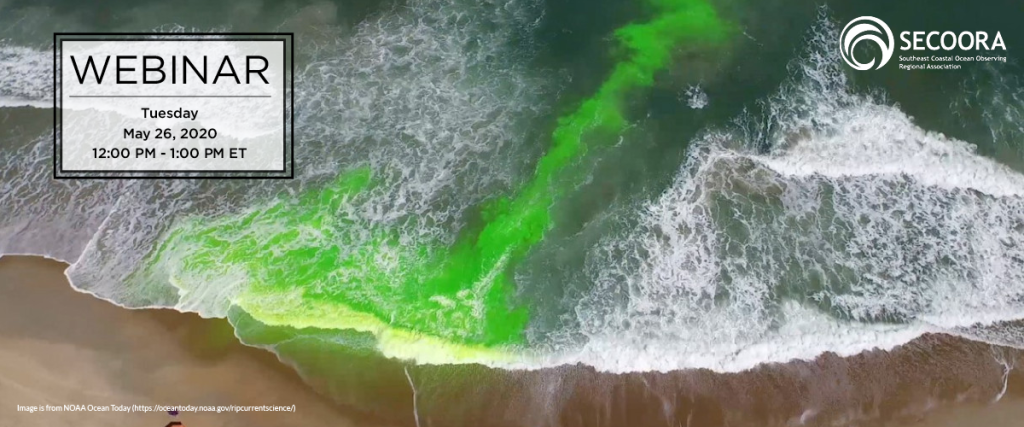
Join SECOORA for a webinar on May 26 at Noon ET with a team from the National Weather Service Forecast Office Wilmington, North Carolina. They will discuss rip current information, important demographics and statistics, the Hurricane Lorenzo case, and future forecast and outreach efforts.
Date: Tuesday, May 26, 2020
Time: 12:00 – 1:00 PM ET
Click here to reserve your spot!
Download the flyer and please share.
Abstract
In the Carolinas, rip currents kill more people than lightning, tornadoes, flooding, and hurricanes. Since 2000 there have been 143 rip current related fatalities and thousands of rescues. While these hazards are confined to the surf zone, they can have far-reaching impacts given the transient nature of people visiting the beaches from around the country. As a result, building resiliency for coastal hazards should not just be considered for those in coastal zones, but should be inclusive of a highly mobile population.
Rip current fatality statistics have provided significant insight – including analyses of age, gender, and specific circumstances that have led to drownings. The silver lining is that these metrics can be used to develop better public safety messaging and enhancements to rip current forecasting.
In addition, the 2019 Hurricane Lorenzo case illustrates significant challenges to public messaging, especially with powerful storms which remain far out to sea. Swells from Hurricane Lorenzo directly led to 7 U.S. East Coast rip current deaths, even as the storm remained over 2000 miles offshore, and in-spite of attempts to increase the visibility of the threat with National Weather Service (NWS) products and social media platforms.
The NWS Rip Current Program continues to evolve in multiple ways to address the education, decision support, and forecast aspects of this coastal problem. The key to improving the program and building community resilience across the Nation is through strong partnerships and collaborative opportunities with a wide spectrum of partners. This presentation will discuss rip current information, important demographics and statistics, the Hurricane Lorenzo case, and future forecast and outreach efforts.
Presenters
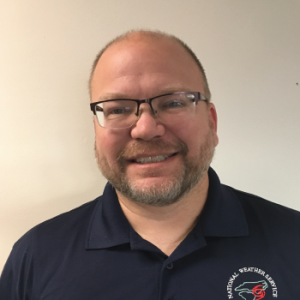
Steven Pfaff
Warning Coordination Meteorologist
National Weather Service Forecast Office Wilmington, North Carolina
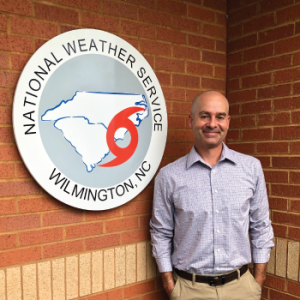
Mark Willis
Meteorologist in Charge
National Weather Service Forecast Office Wilmington, North Carolina

Victoria Oliva
Meteorologist
National Weather Service Forecast Office Wilmington, North Carolina
Related news
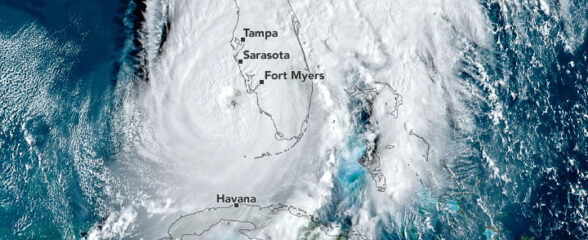
SECOORA Webinar on the Rapid Intensification of Hurricane Ian: Warm Subsurface Water on the Wide Continental Shelf
Join us Thursday, April 24th at 12 PM ET for the April installment of the SECOORA Coastal Observing in Your Community Webinar Series! This month, we will hear from Dr. Yonggang Liu from the University of South Florida. He will discuss his research on the rapid intensification of Hurricane Ian in relation to anomalously warm subsurface water on the wide...

Webinar: SECOORA Data Portal Demo
Join us on Thursday, February 20, 2025 at 1:00 PM ET to learn more about the SECOORA Data Portal and how to navigate it. Axiom Data Science will be providing an overview of the portal, including how to search the Catalog and make a custom data view.
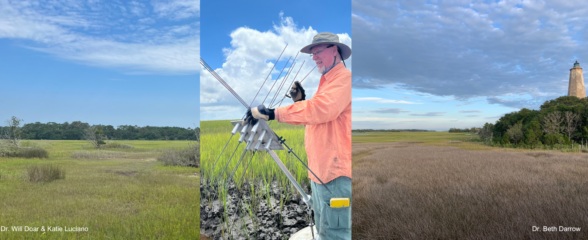
Meet the Winners of the Surface Elevation Table (SET) Call for Proposals
SECOORA hosted a request for proposals for the installation of new Surface Elevation Table (SET) stations or the reactivation of historic SET stations within the Southeast region. This opportunity covers the cost of materials and supplies for the stations. Meet the winners here!